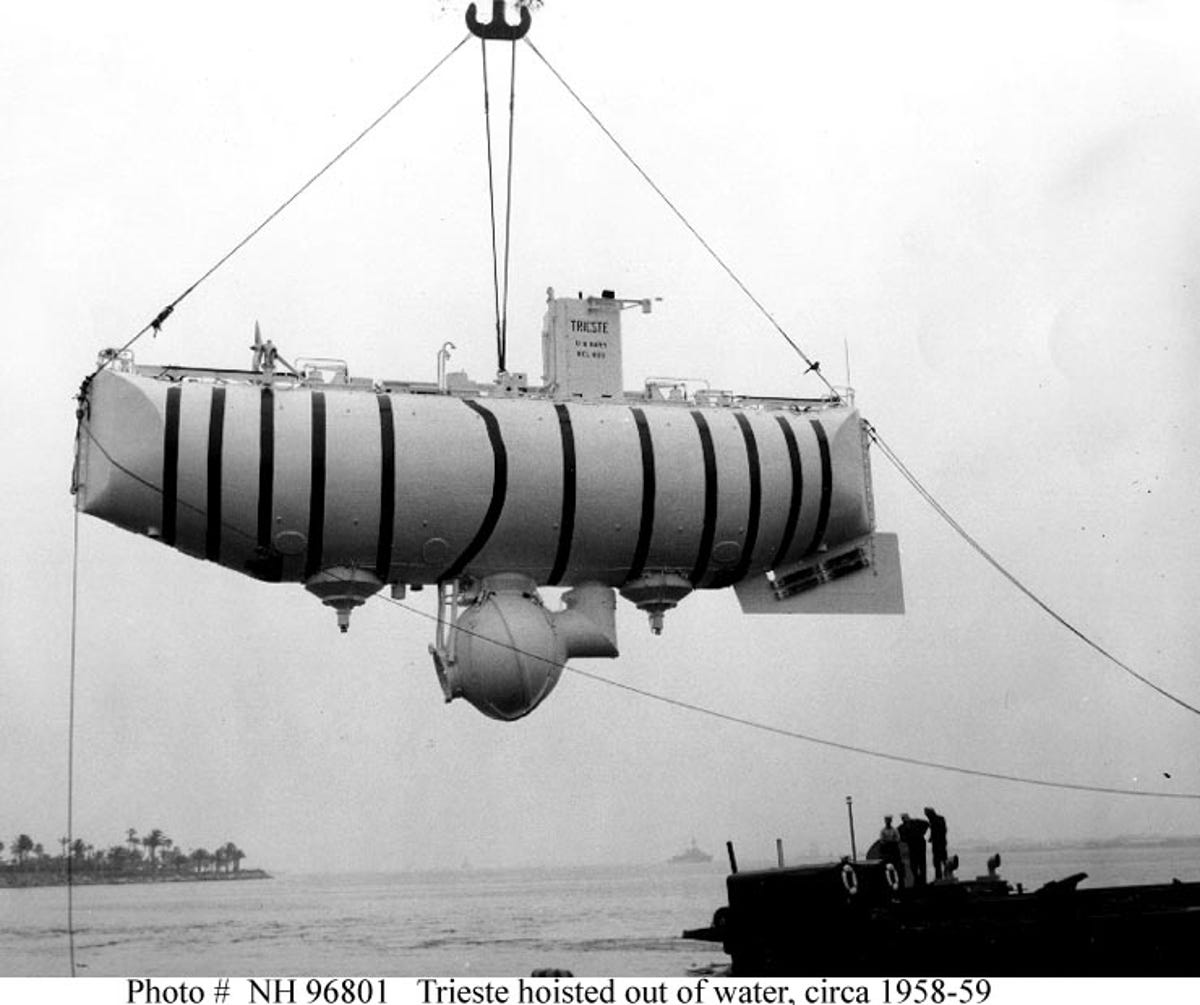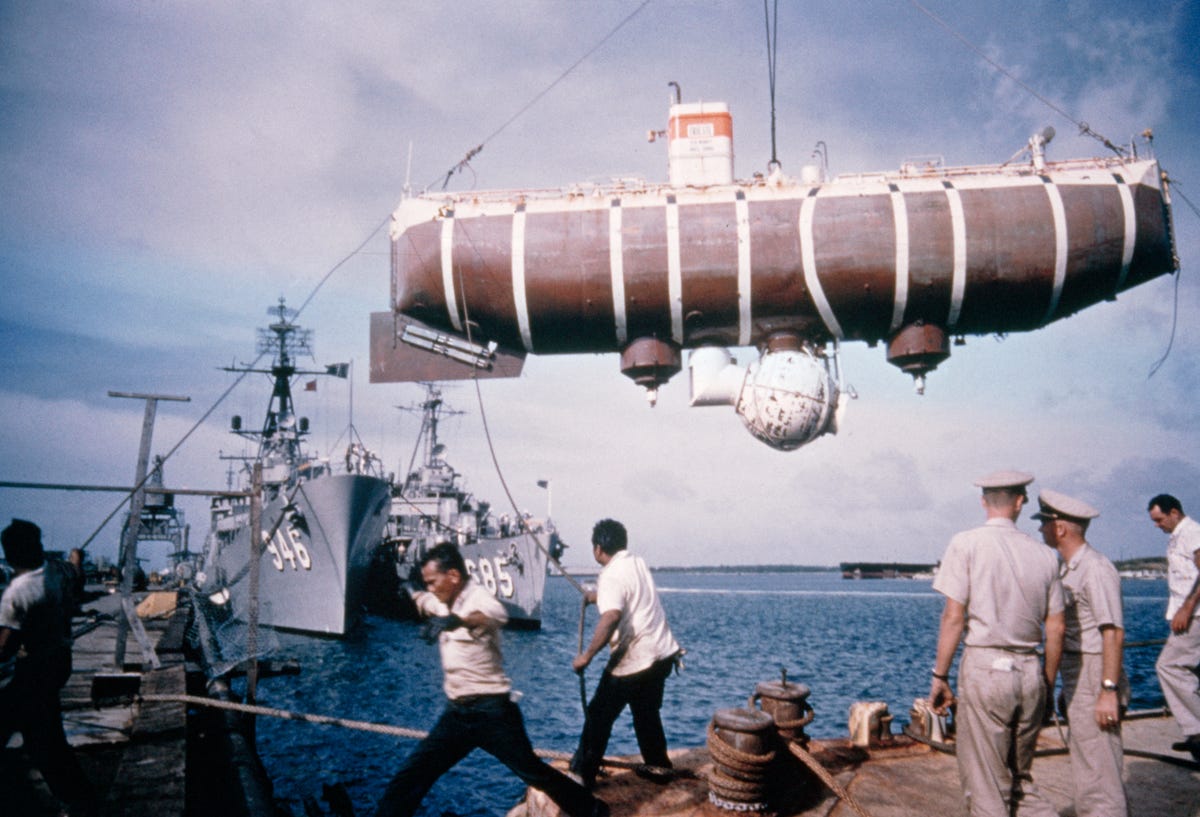Ocean exploration past, present, and future (images)
In 1960, Don Walsh and Jacques Piccard became the first--and only--humans to dive to the bottom of the Mariana Trench. But ocean exploration, though neglected, is gaining steam.

Trieste hoisted out of water
No manned mission has returned to that point, a fact that illustrates that humanity has not favored ocean exploration, instead preferring to put more time, energy and money into space exploration.
But on Thursday, Walsh and Piccard--who is now dead--will be honored at a gala event at the Press Club in Washington, D.C., celebrating the 50th anniversary of their dive. As part of the event--which had to be scheduled a few months after the actual anniversary due to Walsh's unavailability in January--Walsh will be awarded the National Geographic Society's Hubbard Medal, the organization's highest honor. Walsh will also receive the U.S. Navy's Distinguished Public Service Award.
In this image, we see the Trieste as it is hoisted out of the water in either 1958 or 1959, not long after the Navy purchased the vessel.
Walsh and Piccard waving
